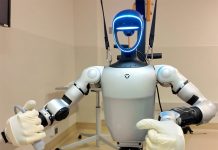
Parkinson’s disease (PD) affects millions globally, significantly impairing their gait and consequently, their quality of life.
Although various treatments are available, they aren’t always effective. However, a recent breakthrough from a Japanese research team may offer renewed hope.
What’s the Issue?
PD is a neurodegenerative disease that significantly affects motor function. Those with PD often exhibit gait disorders, like reduced step length and arm swing, slow movements, rigidity, and an unstable posture.
Despite treatments ranging from pharmacological to surgical, the outcomes are often not as expected.
The New Approach
The team from Japan proposed a new technique involving gait-combined closed-loop transcranial electrical stimulation.
While non-pharmacological solutions like direct current stimulation have been studied before, this new method focuses on synchronizing brain stimulation with the individual’s walking rhythm.
This was after its successful application in post-stroke patients.
The study, led by Ippei Nojima from Shinshu University and Nagoya City University, involved 23 PD patients. They were split into two groups, with one group receiving the actual treatment and the other a placebo.
The treatment involved stimulating the cerebellum externally using an electrode. As the cerebellum is essential for gait control, its stimulation can provide therapeutic benefits.
Encouraging Results
After only ten treatments, those receiving the actual therapy showed significant improvements in various gait parameters like speed, symmetry, and stride length.
Professor Nojima highlighted that this method could potentially help modulate brain networks responsible for gait rhythms.
Another noteworthy aspect of the study is the absence of any dropouts or observed side effects, indicating the procedure’s safety.
Given the rapidly aging population in Japan, this breakthrough is particularly relevant and timely.
Senior author Yoshino Ueki from Nagoya City University stated, “Our intervention might not only benefit PD patients but also those with other disabilities.”
Professor Ueki expressed optimism that this non-invasive intervention could potentially rehabilitate PD patients, restoring their gait.
Concluding Thoughts
While promising, the study does have its limitations. However, it does pave the way for potential future treatments.
Synchronizing personalized brain stimulation with individual gait rhythm might be an effective method to augment gait rehabilitation in PD patients.
If you care about Parkinson’s disease, please read studies about Vitamin E that may help prevent Parkinson’s disease, and Vitamin D could benefit people with Parkinson’s disease.
For more information about brain health, please see recent studies about new way to treat Parkinson’s disease, and results showing COVID-19 may be linked to Parkinson’s disease.
The study was published in the Journal of Neurology, Neurosurgery & Psychiatry.
Follow us on Twitter for more articles about this topic.
Copyright © 2023 Knowridge Science Report. All rights reserved.



